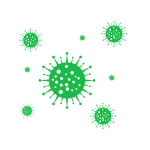Obstructive Sleep Apnea (OSA) has long been a challenge for patients and healthcare providers alike. With the advancement of medical technology, the emerging option of upper airway stimulation therapy presents a promising alternative for those who struggle with traditional treatment methods.
This article delves into the innovative solutions available for managing OSA, specifically focusing on upper airway stimulation therapy and its benefits over more conventional options like CPAP therapy.
What is upper airway stimulation therapy for obstructive sleep apnea?
Upper airway stimulation therapy is a novel treatment designed to help patients with obstructive sleep apnea. It involves the implantation of a device that stimulates the hypoglossal nerve. This nerve is responsible for controlling the movement of the tongue and soft palate, which are critical in maintaining an open airway during sleep.
The therapy is especially beneficial for patients who cannot tolerate CPAP machines. By gently stimulating the airway muscles, the therapy helps prevent airway collapse, allowing for improved breathing patterns during sleep.
According to data from the Mayo Clinic, this emerging option of upper airway stimulation therapy has shown promising results in enhancing sleep quality among patients who have had difficulty adhering to traditional methods.
How does upper airway stimulation work in patients with OSA?
Upper airway stimulation works by monitoring the patient’s breathing patterns. When a pause in breathing is detected, the device sends gentle electrical pulses to the hypoglossal nerve, prompting the tongue to move forward and ensuring that the airway remains open.
This form of treatment is adjustable, allowing healthcare providers to tailor the stimulation to each patient’s specific needs. The Inspire device, approved by the FDA in 2014, exemplifies this technology and is designed for those with moderate to severe OSA.
Clinical studies have demonstrated that patients using upper airway stimulation therapy report significantly lower apnea-hypopnea indices, indicative of improved breathing stability during sleep.
What are the benefits of upper airway stimulation over CPAP?
One of the primary benefits of upper airway stimulation therapy is its non-invasiveness compared to surgical alternatives. Unlike CPAP therapy, which can be uncomfortable and burdensome, this therapy allows for a more natural sleep experience.
- Improved comfort: Patients often find upper airway stimulation to be more comfortable than wearing a mask.
- Better adherence: With fewer side effects, patients are more likely to stick with their treatment plan.
- Significant sleep quality improvements: Many users report feeling more rested and alert after treatment.
Moreover, this therapy does not require any daily setup or maintenance like CPAP machines, making it a convenient option for many patients. The results of various studies indicate that a significant percentage of patients prefer this method over traditional treatments.
What are the side effects of upper airway stimulation therapy?
Like any medical treatment, upper airway stimulation therapy comes with potential side effects. However, they are generally mild and can include discomfort at the stimulation site, changes in sensation in the tongue, and occasional sore throat.
It’s important for potential candidates to discuss these risks with their healthcare provider to ensure they fully understand what to expect. In most cases, patients find the benefits to outweigh the potential downsides.
Regular follow-up appointments are essential to monitor the device’s performance and manage any side effects. Most patients adjust well after the initial implantation phase.
Who are ideal candidates for upper airway stimulation therapy?
Ideal candidates for upper airway stimulation therapy include adults with moderate to severe obstructive sleep apnea who have not had success with CPAP therapy or are unable to tolerate it. Candidates should also have a body mass index (BMI) of less than 32.
A thorough evaluation by a sleep specialist is necessary to determine eligibility. This evaluation typically includes a polysomnography test, which helps assess the severity of the condition.
Patients with anatomical abnormalities in the airway may also benefit from this treatment, as it addresses the specific causes of airway collapse during sleep.
What is the cost of upper airway stimulation treatment?
The cost of upper airway stimulation therapy can vary widely depending on various factors such as the healthcare provider, geographic location, and insurance coverage.
On average, the procedure may range from $20,000 to $30,000, including the device and surgical implantation. Many insurance companies cover the costs for patients who meet the criteria for the therapy, but it is essential to confirm coverage with the insurance provider.
While the upfront cost may seem high, many patients find that the long-term benefits, including improved sleep quality and reduced health risks associated with untreated OSA, justify the expense.
Related questions about upper airway stimulation therapy
What is the new treatment for OSA?
The new treatment for OSA includes upper airway stimulation therapy, which provides an innovative solution for individuals who have difficulty with traditional CPAP devices. This therapy offers a less invasive option that directly addresses airway collapse during sleep.
What is upper airway stimulation therapy?
Upper airway stimulation therapy involves implanting a device that stimulates the hypoglossal nerve to help keep the airway open during sleep. This advanced treatment targets the underlying causes of obstructive sleep apnea.
What is the downside of Inspire?
While the Inspire device has many benefits, some downsides include potential discomfort at the implantation site and the need for surgical intervention. Additionally, not all patients may be suitable candidates for this therapy.
What is the newest alternative to CPAP?
The newest alternative to CPAP is upper airway stimulation therapy. This treatment offers a promising solution for those struggling with traditional methods, providing a more comfortable and effective way to manage obstructive sleep apnea.
